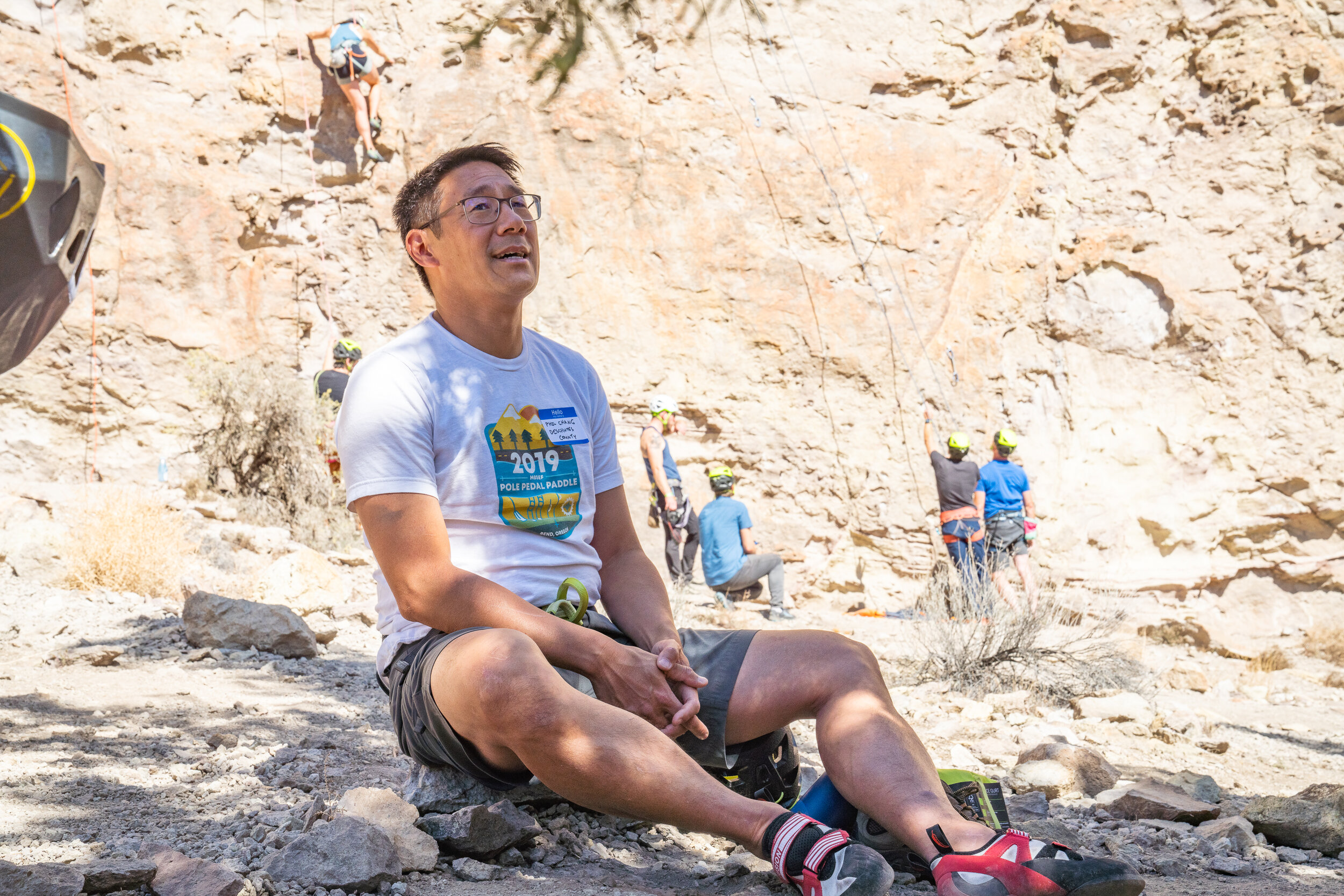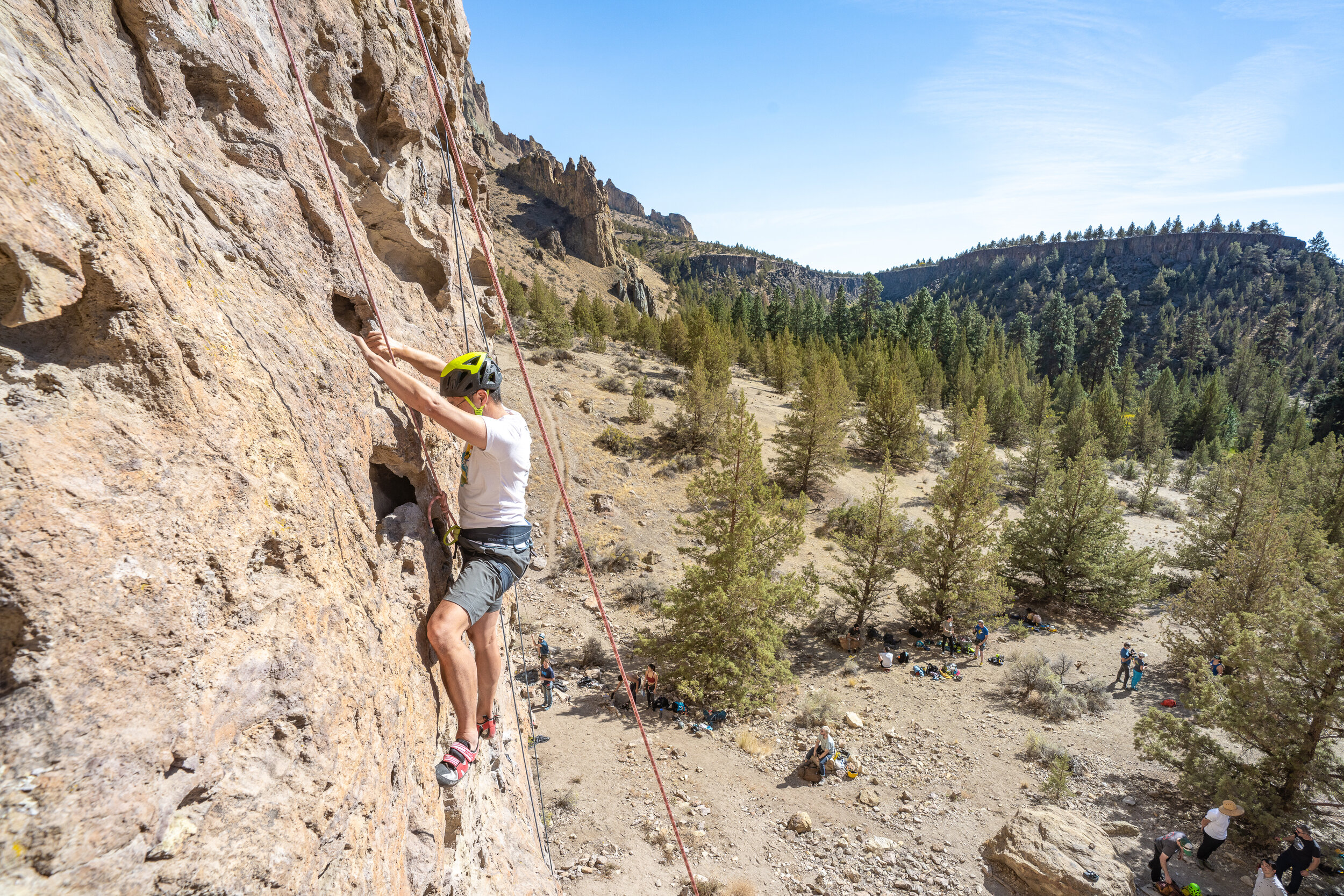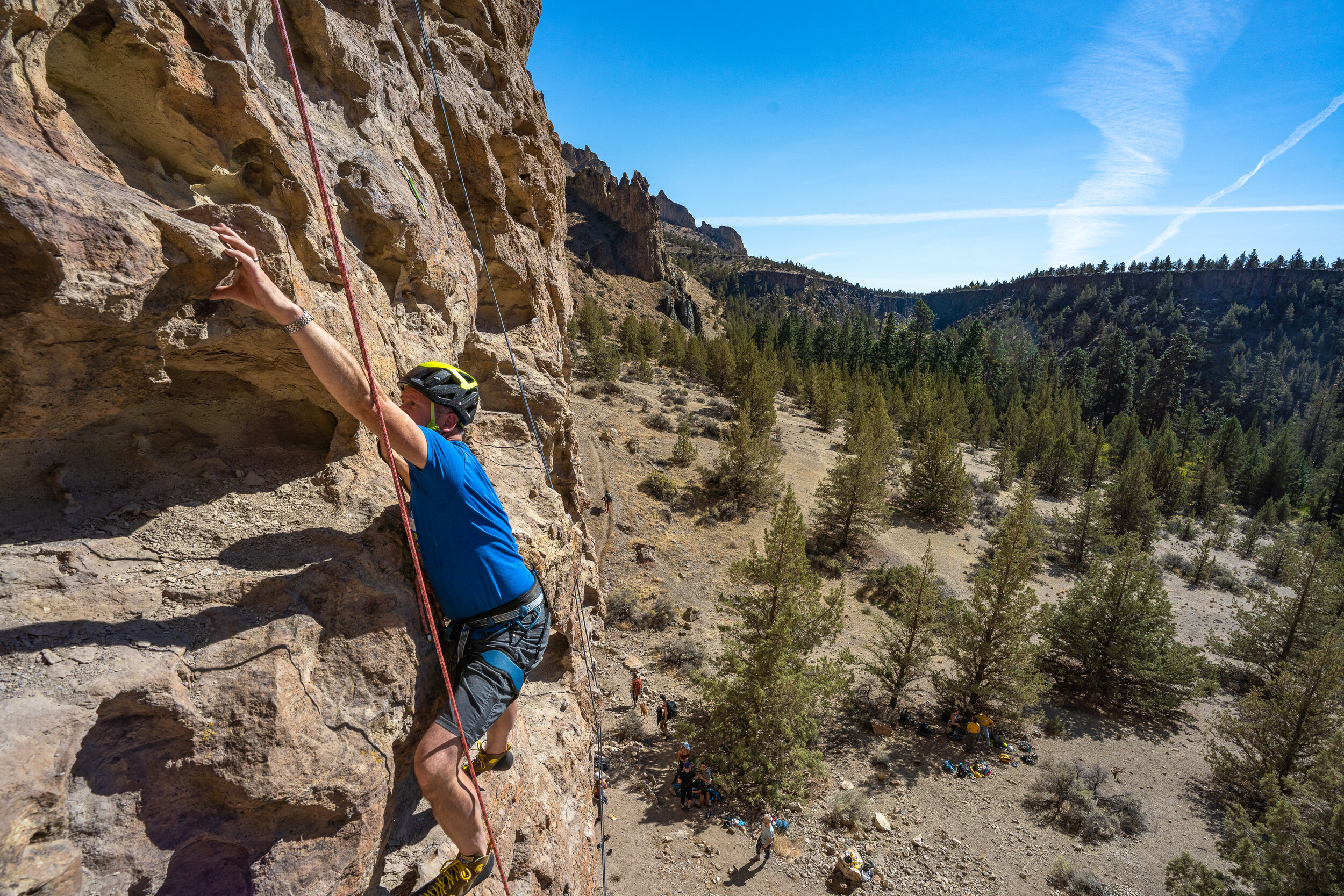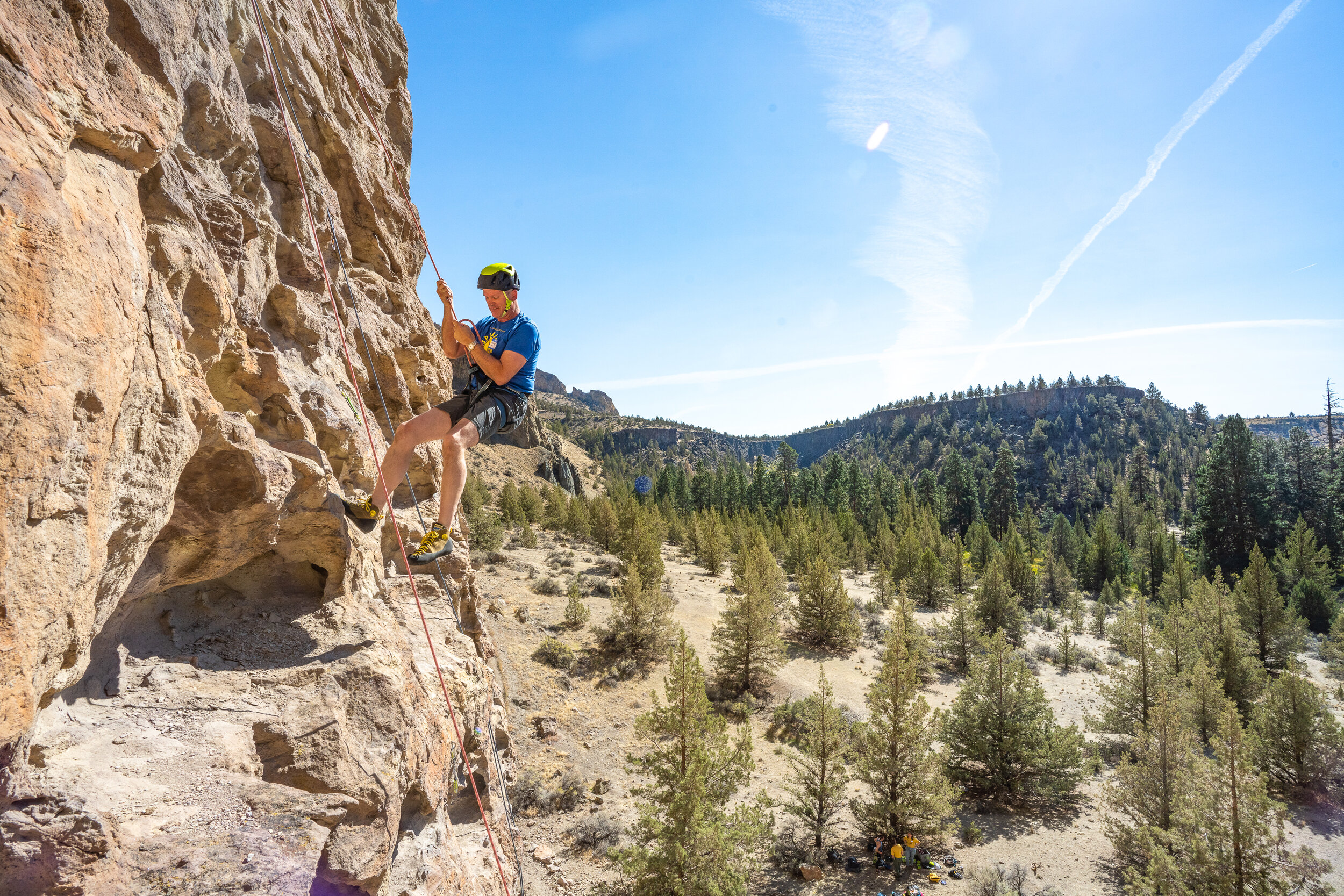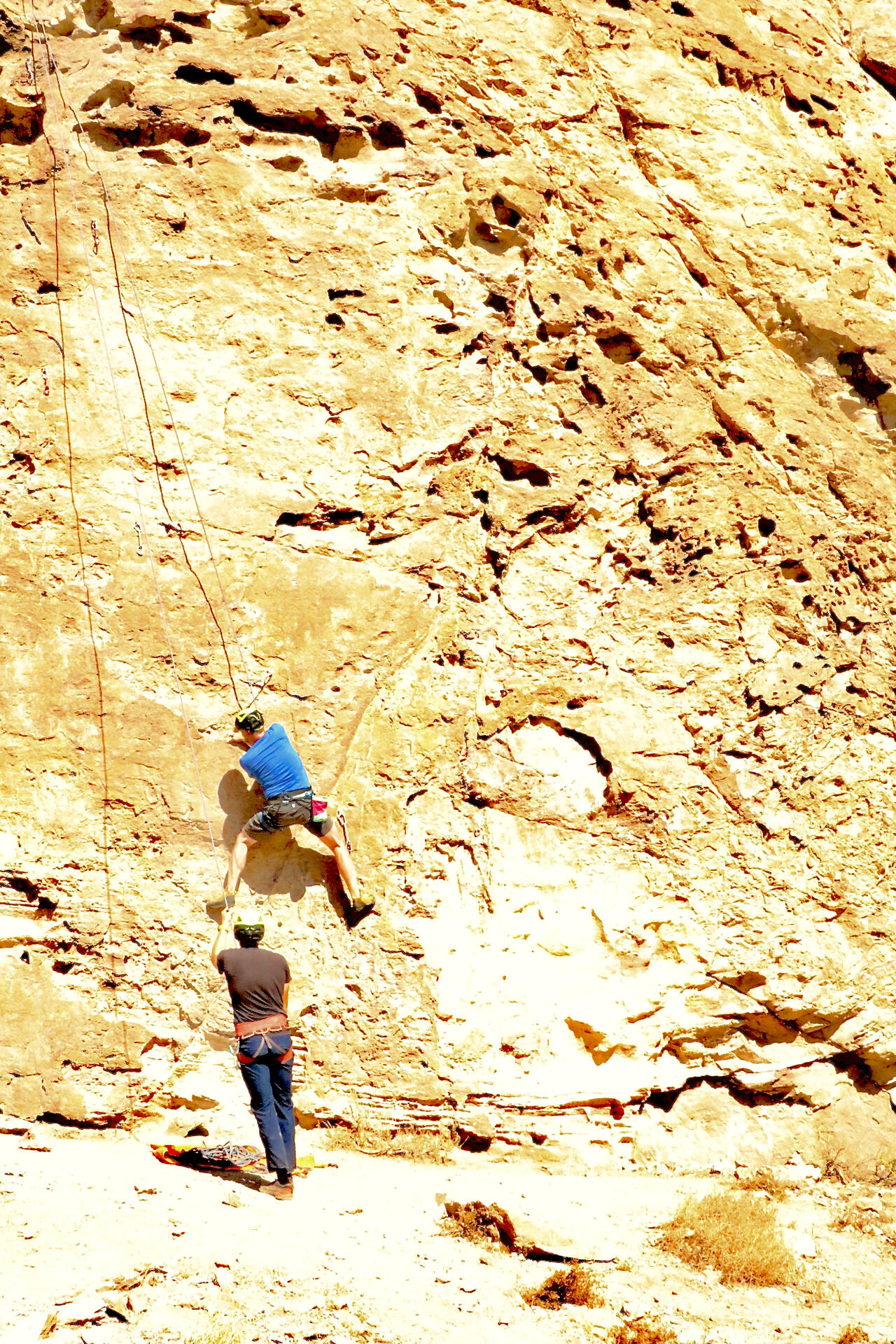On Saturday October 2, an array of land managers, local and state politicians, and Oregon business leaders joined climbing advocates for a day of recreation at Smith Rock State Park. The focus of the event was centered around the future of climbing in the Park, and how climbing positively impacts the economy and vitality of Central Oregon’s surrounding communities. This installment of the American Alpine Club’s Hill to Crag Initiative, presented in collaboration with Edelrid North America, has once again used the comradery and intimacy of a day at the crag to forage connections and honest communication with local and state politicians and land managers.
The AAC’s policy team is committed to illuminating how federal legislation impacts climbers, and our most recent edition of the Summit Register Policy Zine dives deep into initiatives like 30x30 and Protecting America’s Wilderness + Act (PAW+), outlining how these policies can support climate action and conservation efforts that climbers care about across the United States. But the AAC is also well aware of the power of local communities, and how partnerships between climbers and local leaders can pave the way for lasting change.
At this Hill to Crag event, Matt Davey, the Superintendent of Smith Rock State Park, spent the day alongside Oregon decision makers and climbing advocates, speaking about the challenges the Park currently faces and how we can all come together to work towards a sustainable future for Smith Rock. Due to the robust history of climbing at the Park, climbers had a large impact on the modern day stewardship of this landscape. He informed the group that many of the original trails in the Park were built and maintained by climbers. To this day, that has not changed, as organizations like the Smith Rock Group and High Desert Climbers Alliance take the lead on grassroots efforts to maintain and steward the Park. When asked what climbers can do to positively impact Smith Rock State Park, Davey noted that “the best thing climbers can do is get involved with one of the nonprofits like Smith Rock Group, or their local climbing organization the High Desert Climbers Alliance. Then together as a team they can come together and make the biggest impact.”
After learning about the history of the Park and the challenges that exist with its maintenance, local leaders and decision makers were invited to try climbing. It was a very special experience to have professional climber and Edelrid Athlete Tommy Caldwell on belay as Bend County Commissioner Phil Chang and CEO of Economic Development of Central Oregon Roger Lee made their way up routes at the Monument Crag.





